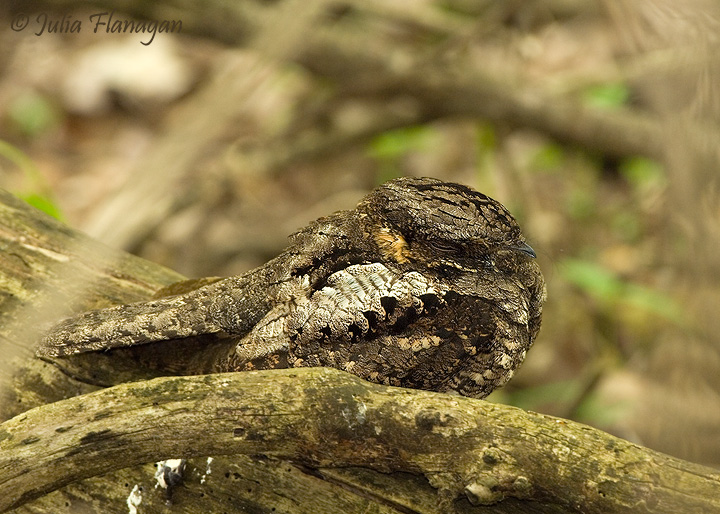
Photos © Julia Flanagan; Magee Marsh, Ohio; Spring 2009 Text by Rafael Caballero and Lauren Harvey |
Whip-poor-will The Whip-poor-will is heard a lot more than it is actually seen. That is because they are mainly active at night. During the day Whip-poor-wills sleep on the floor of the forest and it is difficult to spot them because they are camouflaged with the forest floor. The Whip-poor-will was named after the sound that it sings. It chants out whip poor will, whip poor will. These birds are 9-10 inches long. They have large heads and huge eyes, good for night vision. The upper part of their body is gray, black, and brown and the lower part is gray and black. They generally have a short bill and a black throat. Males have a white patch under the throat and the outer tail feathers have white tips. For the female bird, the patch under the throat and the tips of the outer tail feathers are light brown instead of white. The bird stops in Northern Virginia during breeding season, but it is only temporarily here. It lives throughout the Eastern half of the U.S., throughout Central America, and a small part of Canada. They live in deciduous forests located in these areas. The adult Whip Poor Will birds enjoy eating insects such as moths and flies. The young Whip Poor Will birds eat the food regurgitated by the parents and smaller insects that cross them. |





